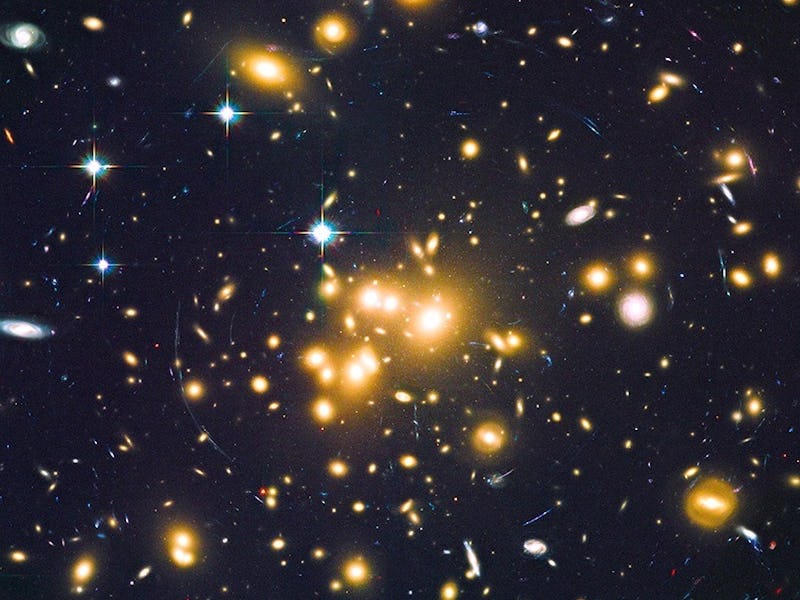Astronomers Spot a Trove of Dwarf Galaxies in the Early Universe

Although galaxies are incredibly massive celestial objects, they can still hide in plain sight, hidden from our eyes and instruments. Thanks to gravity, however, a team of researchers from University of California, Riverside, using data acquired by the everlasting Hubble Space Telescope, just caught a glimpse of a large number of very old, very distant dwarf galaxies that fill in part of the picture of how stars formed in the early universe.
The team of astronomers announced their findings in the The Astrophysical Journal this month.
As powerful as our telescopes can be, sometimes we need a bit of help from the universe. If a massive object like a galaxy happens to be along the direct line of sight of something else that’s further away, the gravity from that object will magnify the light coming from the more distant object. Physicists have dubbed this phenomena gravitational lensing, and now they’re using it to look for galaxies that we wouldn’t be able to see otherwise.
Using the massive cluster of galaxies known as Abell 1689 as their lens, the UC Riverside team discovered a new cluster of dwarf galaxies that are two to six billion years old, residing in a really old neighborhood of the universe. Astronomers hope that area will help them better understand the time when the universe formed the most stars.
The massive cluster of galaxies in the middle work as a natural lens, producing streaks of light from distant galaxies behind the cluster.
These newly discovered galaxies are extremely faint, and we probably wouldn’t be able to see them without gravitational lensing. But there also happen to be a lot of them, giving researchers plenty of places to look for young stars when the James Webb Space Telescope launches in 2018.